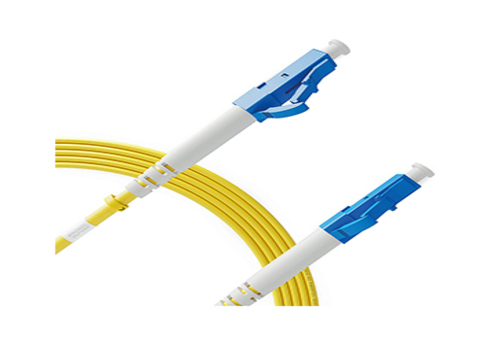When maintaining a communication system, cleaning fiber optic patch cords is an essential task to ensure the proper functioning of the equipment.

Dirty connectors and/or end faces are said to be the root cause of nearly 90 percent of fiber-related problems in communication systems. At the end of the day, we're talking about connectivity here, so make sure each of its components is operating flawlessly so you can make this system as a whole run at its highest quality. Don't forget that with your fiber optic system, you should be able to do anything under your control to ensure that your system is able to provide you with the capabilities it was designed and built for.
With that said, let us walk you through some great ways to clean fiber optic patch cords. Grab a pencil and notebook and jot them down so you can start using them.
First, inspect the connector and determine the level of contamination so you can determine how much it should be cleaned, make sure the area where the connector is to be cleaned is clean, and at room temperature below, and its surface is firm and stable.
We strongly recommend that you take a look at the dedicated cleaning kits available on the market as they contain the proper cleaning tools and liquids. As a professional fiber optic cable manufacturer, we also provide you with fiber optic tool kits. Our TLM5002A tool clean kits are designed for your need for cleaning optical fiber jumpers. We also provide you with fiber cleaning pen which is a good helper in cleaning the connector.
A common mistake among beginners or hobbyists in fiber optics is that they will attempt to use equipment that is not suitable for proper cleaning of connectors and endfaces. (Do not clean the connector with a rag.)
Disconnect the fiber optic cables at both ends and make sure to turn off each laser source. Make sure not to touch the end of the fiber with bare fingers or other surfaces that would compromise its safety. During cleaning, do not bend the cable in any way. This can lead to cracks, misalignments or leaks that can lead to poor performance quality.
When handling fiber optic cables, always wear gloves and handle fiber optic cables with great care. For example, if you feel like you're pushing them or putting too much pressure on them, find another way to clean them. Isopropyl alcohol should be the only cleaning substance allowed in the cleaning process.
Having said that, don't use acetone. Make sure any tissue paper or towelette you are using is new, clean and soft. Lint-free paper towels are a must if you suspect a particular surface will damage your connector, or even dare to start using it.
Before inserting the fiber-fast connector into the fiber optic adapter, make sure it is clean and tidy. Otherwise, it will mix contaminants into your connection, after cleaning the connector, make sure its surface is kept clean. You can use a magnifying glass to pull it down. These spots need to be inspected in depth because sometimes they can still hold contaminants even though we think they may have been cleaned completely, and the last step in the cleaning process should be to cover the connectors with dust caps or protective covers.
Cleaning fiber patch cords should become a habit. Dust can also get in the way of keeping your communications system high-performance over time. Remember, any practice to ensure connection quality should not be ignored. Instead, make sure to always take action so you can foresee unforeseen adverse situations.
All of our new patch cords (in a limited quantity) now come with new lint-free paper towels for cleaning replacement cables and fiber optic adapters. We believe in good connections, and this free add-on is for the best and better connection to fiber infrastructure.
Related Blog
Related Products